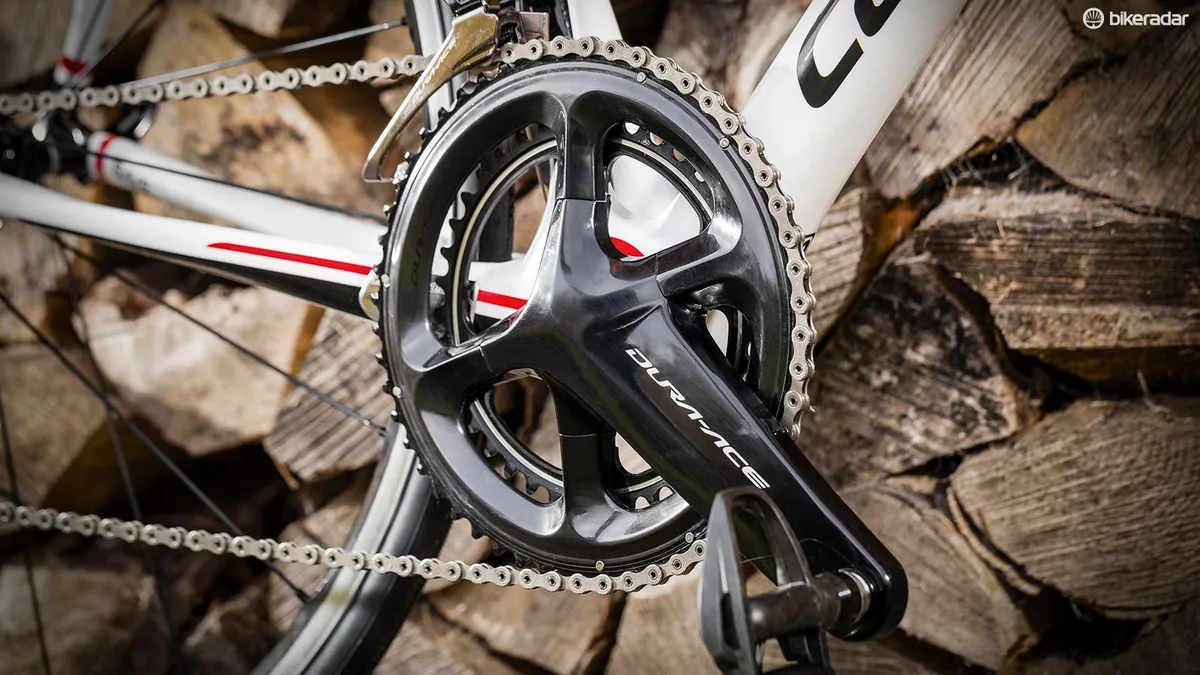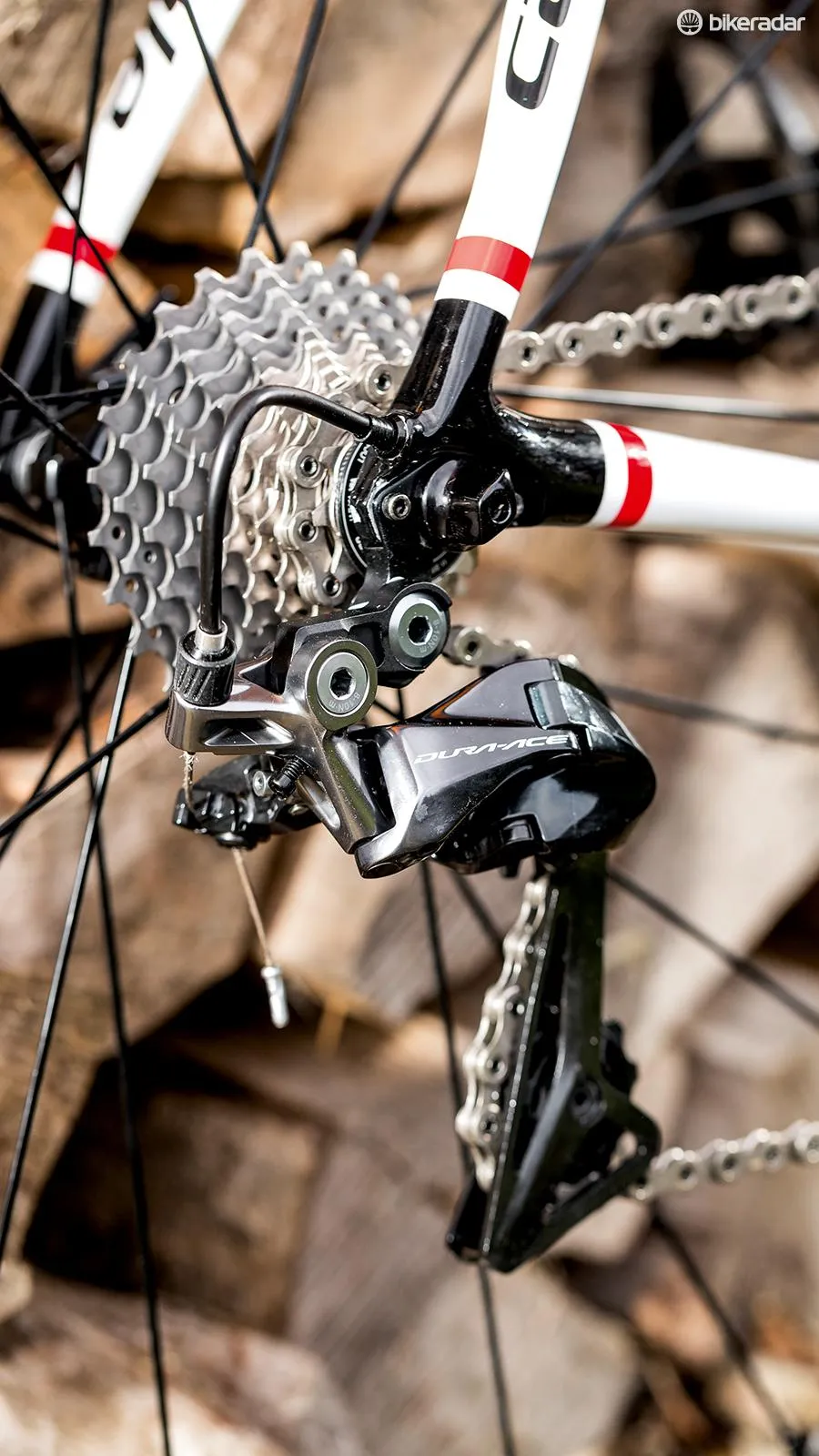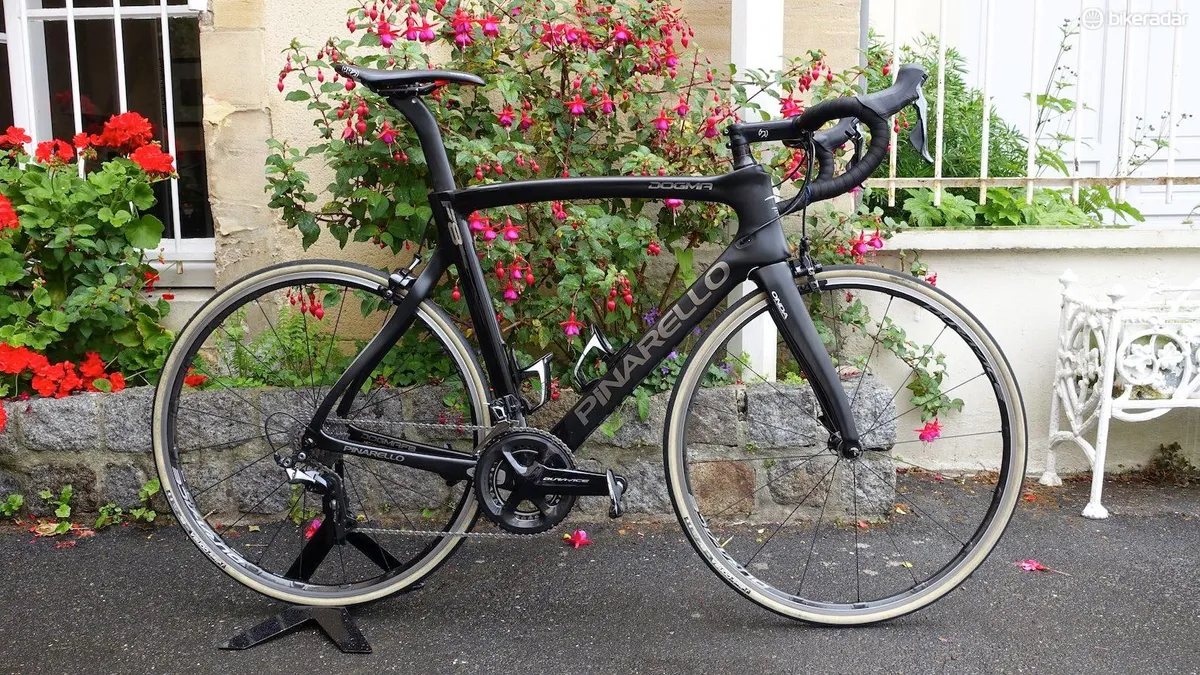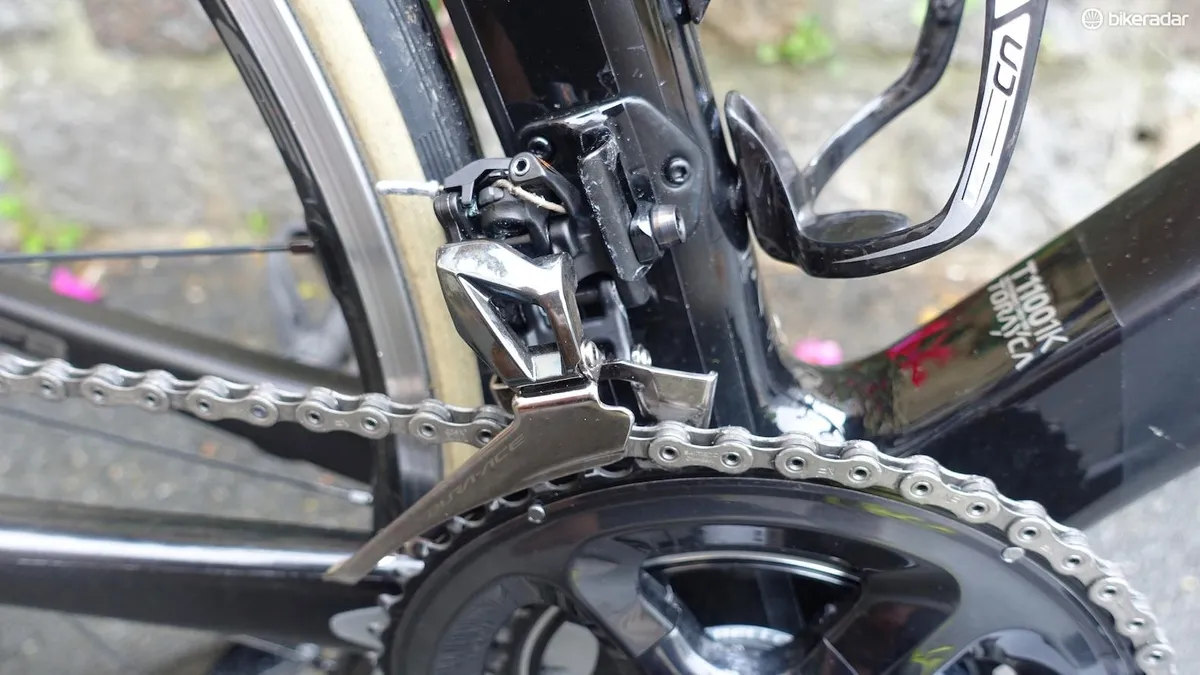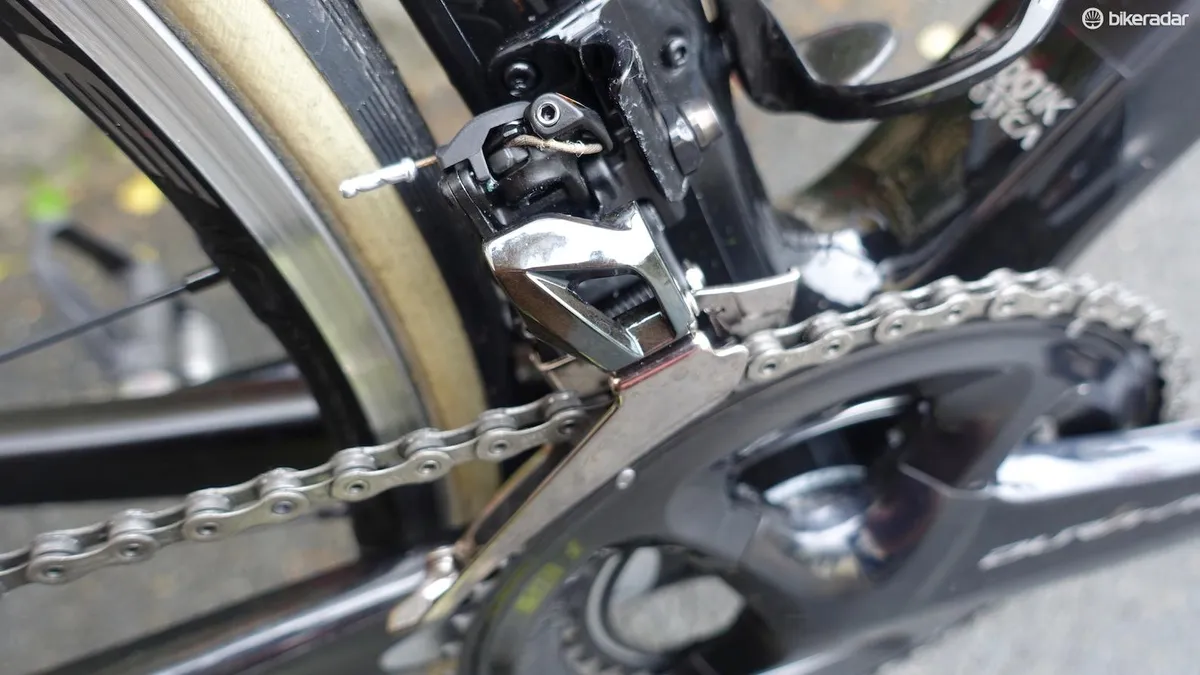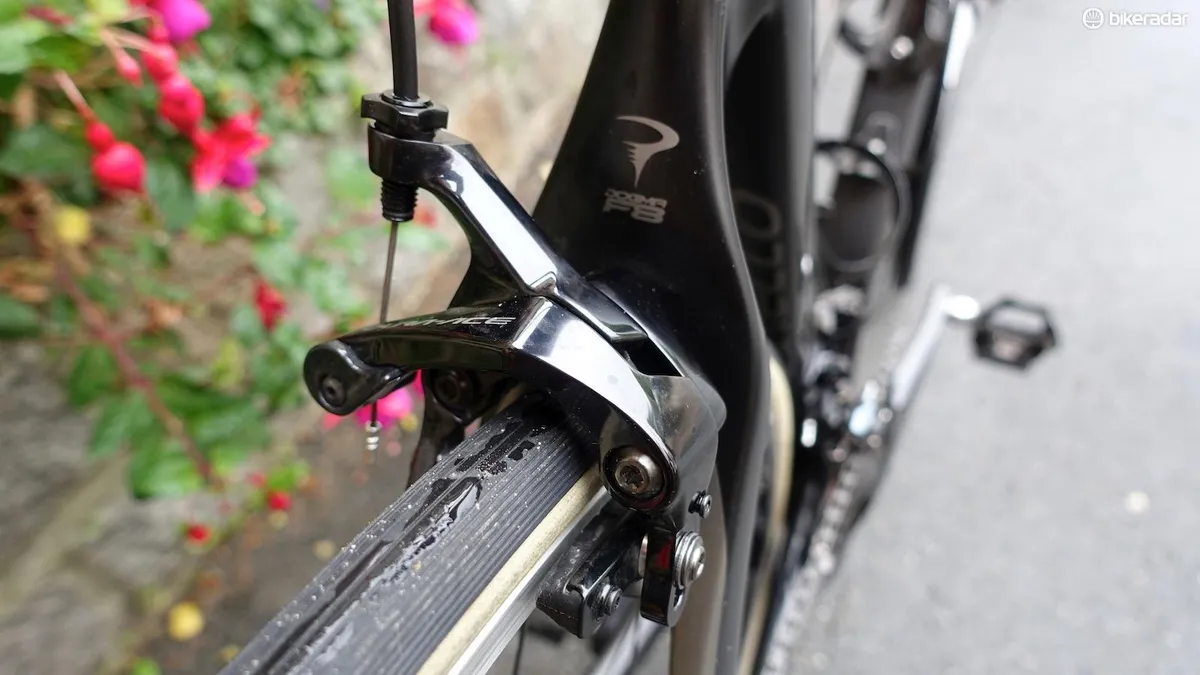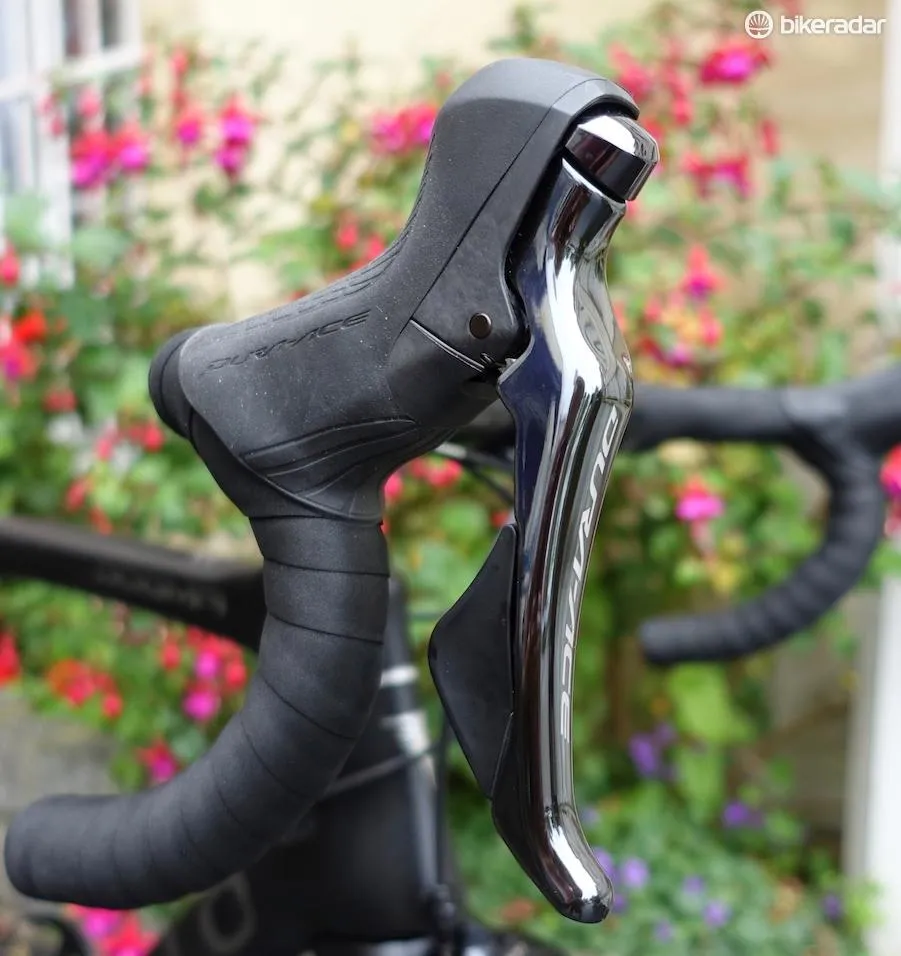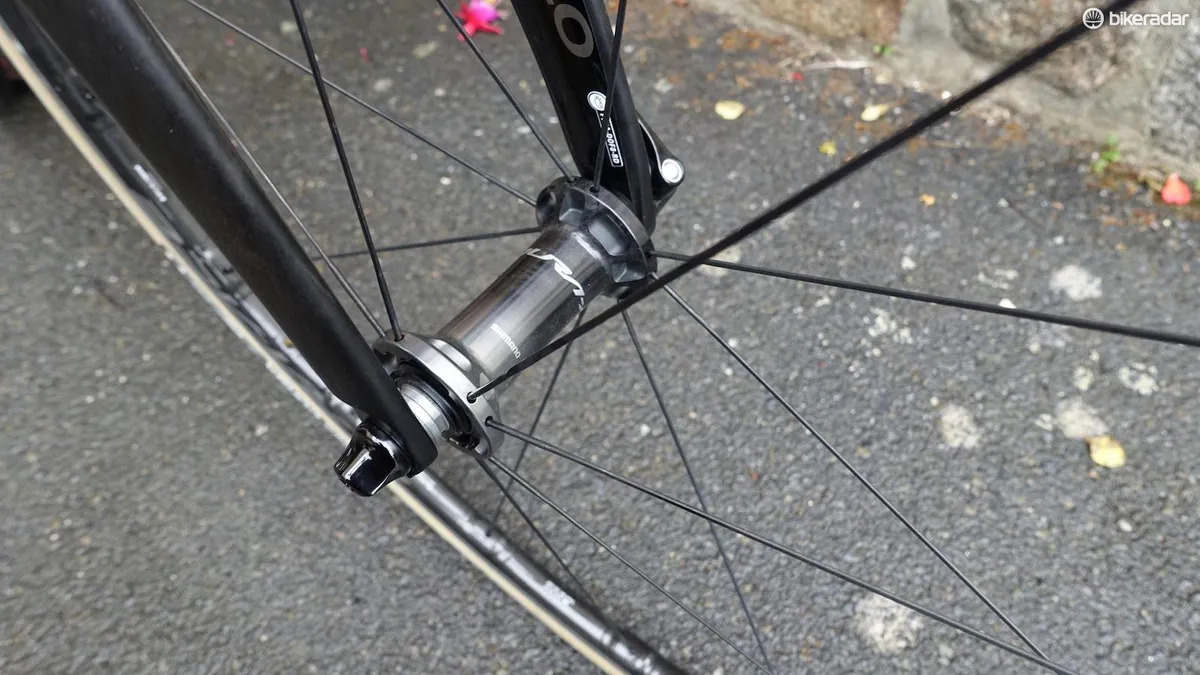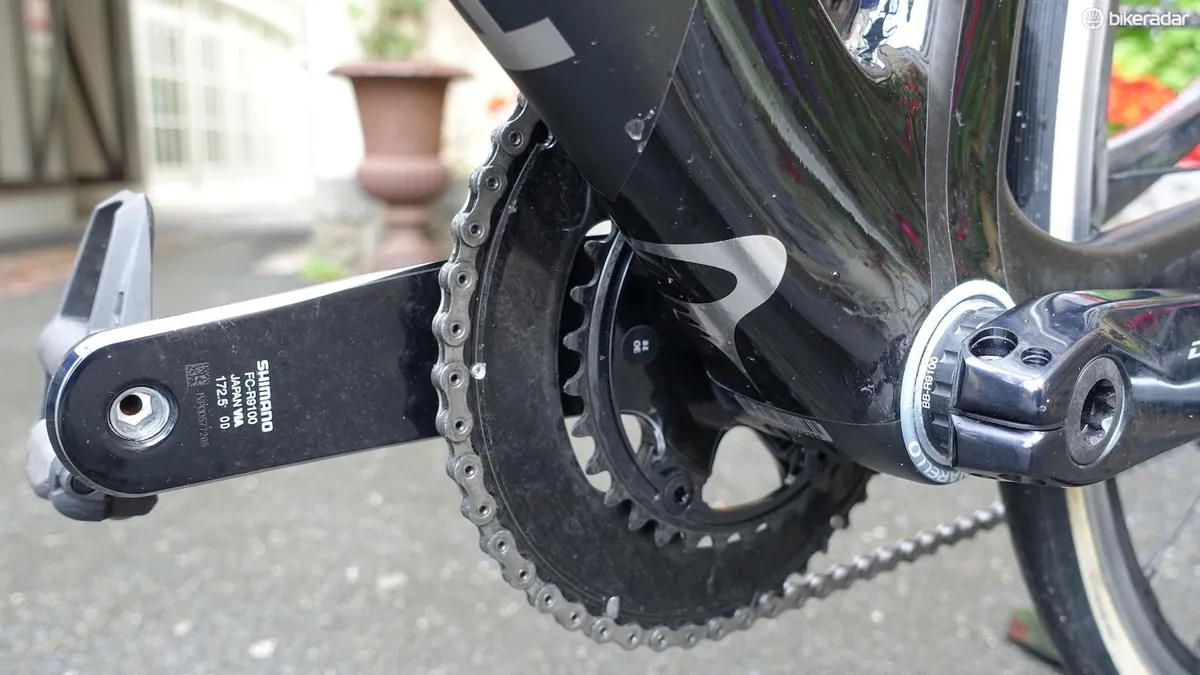Update 31/08/21: Shimano has now launched the new Dura-Ace Di2 R9200 groupset.
Shimano’s mechanical flagship has been the most used top-flight group for decades, but the advent of electronic variants and rivals from SRAM and Campagnolo has seen it take a bit of a back seat.
- Shimano Dura-Ace R9100 and R9150 Di2 groupsets: all you need to know
- Shimano Dura-Ace Di2 R9170 first ride review
- Shimano Dura-Ace vs SRAM Red
- Road bike groupsets: everything you need to know
But ignore the mechanical R9100 at your peril. The rear mech has adopted a more angular, flatter and flusher-fitting profile from its sister mountain bike group, XTR.
The Shadow design sits far more in board than the older style, so it’s better protected in the event of a driveside crash. If your frame has internal routing with a chainstay exit the much smaller amount of external cable you use — Shimano claims you’ll use 4g less cable — not only looks slicker, it helps the shift at the lever actuate with more snap. The new design also allows the use of a bigger gear range, with an 11-30 available for the first time.
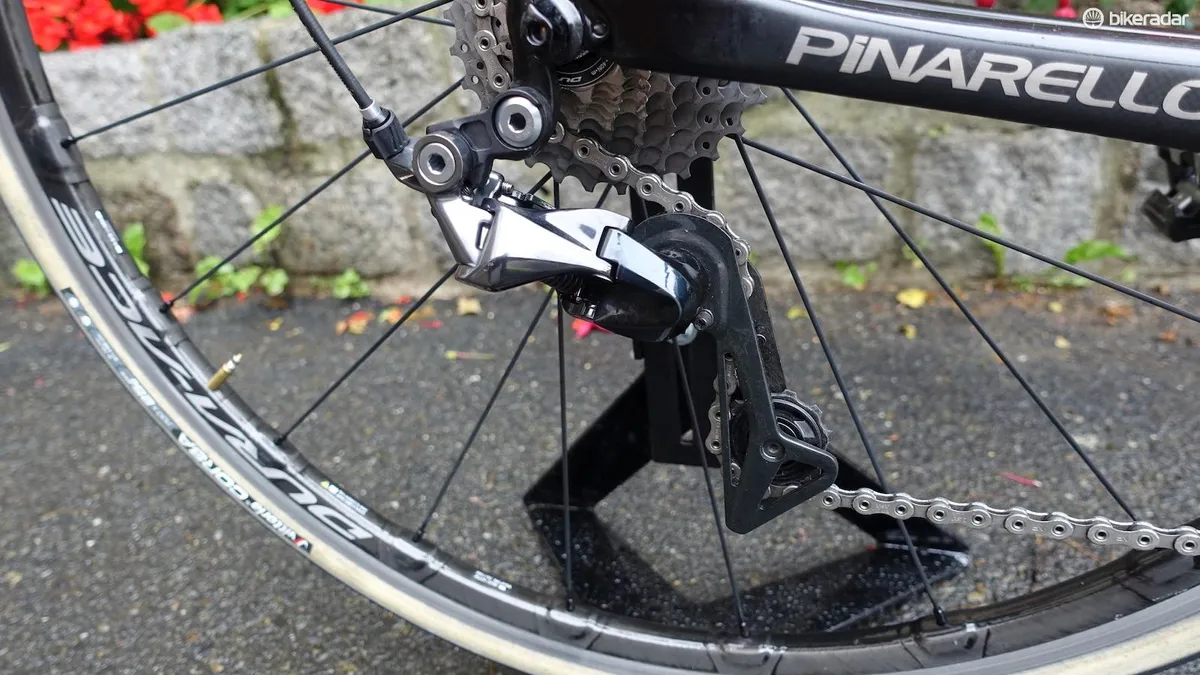
The crank still has the same four-arm pattern as the 9000, but it’s a lower profile with flatter, broader arms. The inner chainring has been placed 0.4mm closer to the centre line of the bike, which Shimano claims will allow for shorter chainstays, here reduced by 5mm down to 410mm. This makes for a shorter wheelbase for a more agile ride.
The front mech is radically different, replaced with an internal toggle mechanism. The long extended arm is gone, and the new mech sees a built-in cam-actuated cable tension adjuster, and the routing is particularly neat.
This creates more clearance for large tyres, an issue that some cyclocross and gravel bikes ran into with the previous mechanisms.
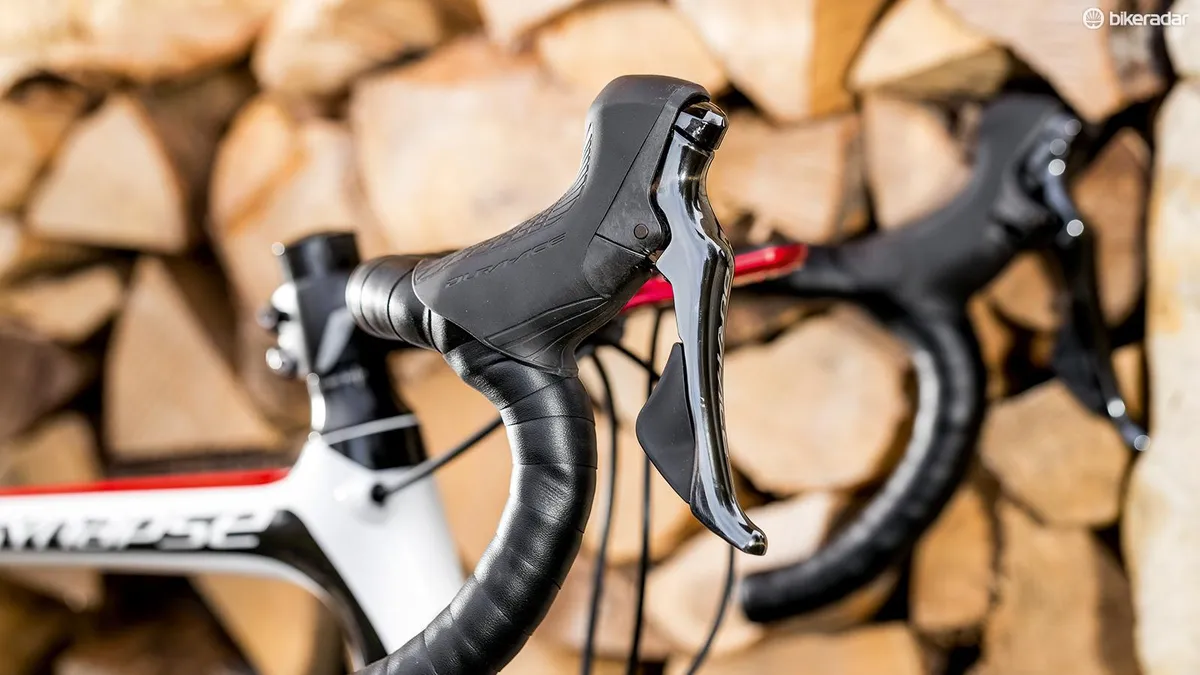
Also built into the new derailleur is a cable tension adjuster. This eliminates the need to install an in-line barrel adjuster when assembling the bike. Lastly, the new mech can be pulled by a bare cable but also incorporates a housing stop, allowing frame manufacturers more options for cable routing.
It also retains the same cable actuation rates as the previous generation 9000, which means that reverse compatibility isn’t an issue.
The main contact points, the STI units, have been significantly reworked too. The lever body has been slimmed, shaped and textured, and it now offers more reach adjustment too — 14mm up from 10.
The brake levers are curvier and sit better in your hands from the tops to the drops. The rear shift paddles have a more sculpted and defined push pad.

Shift speed is about the same, but compared to the silence of the 9000 series these feel sharper, with more of a snap to the shift, and it’s a little more audible too. The slightly woolly shift has been replaced with a snap that’s closer to Campagnolo’s Super Record than previous generation Dura-Ace.
The brakes have been reshaped to accept wider 28mm tyres on wide rims, and the profile is angular but slimmer with it.
The only downside is the movement of the brake quick release — it’s harder to reach when riding and it’s now either open or closed, rather the gradual ratchet of before. We preferred being able to slightly open a brake to eliminate rub if we ended up riding on a buckled wheel.
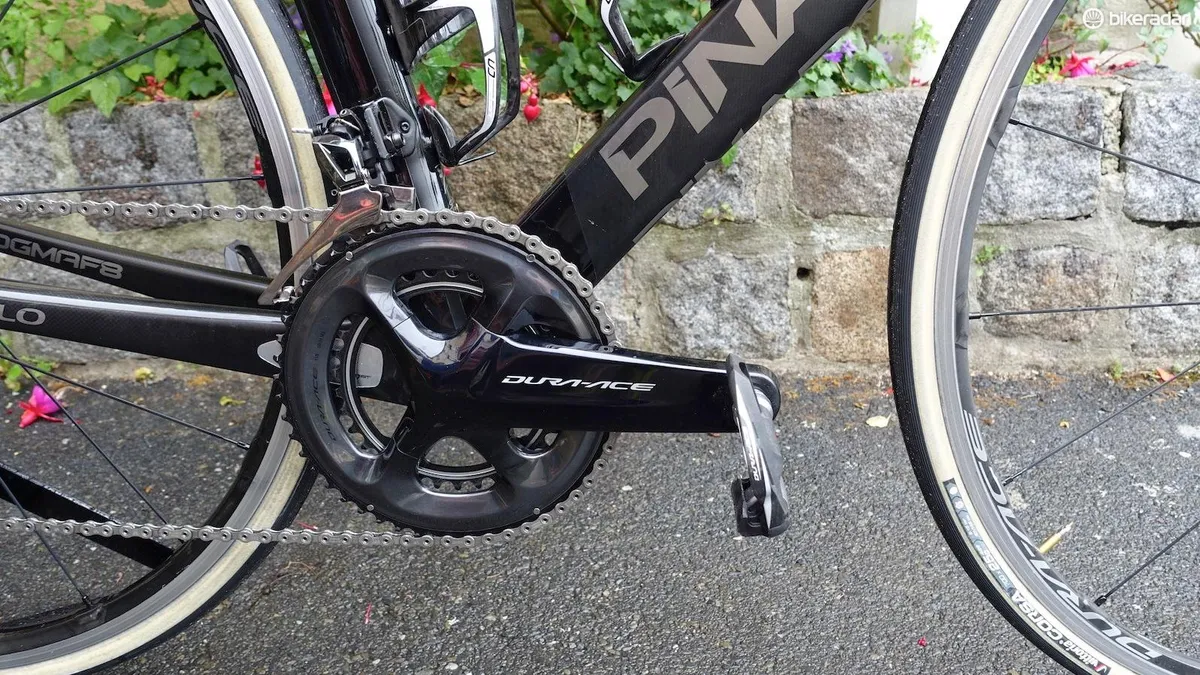
The black semi-sparkly finish has grown on us, but we wish Shimano had retained a bit of polished metal. It is the undoubted master of alloy when it comes to groupsets, but the new cranks’ black/sparkle/slate colour looks a bit faux carbon, so come on Shimano, you champion aluminium, and prove its worth in cranks, so let’s see it.
Also our beautiful cranks are already showing signs of scuffing and flattened shine after five months of testing.
